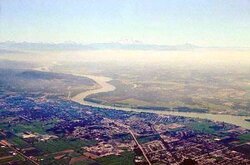- Nov 21, 2005
- 827
Check out these facts they're saying about burning wood, it costs more, and cancerous, and all the diseases it causes for everyone.
http://www.pscleanair.org/burning/indoor/30-17-fact_sheet-burning.pdf
My questions include:
They say wood costs as much as, or more than other sources. Really, I spent $1,652 in oil heating my house last year and $800 to heat my house with wood this year. But, that is based on the price of wood in Seattle.
They say wood smoke has far more pollutants in it than cigarette smoke and you have 12x greater risk of getting lung cancer. My question is, does it matter? Even if true, I am not putting my face into the flue and inhaling the wood smoke. Granted, some can sneak out but I believe most people find no smoke enters their house when they burn wood or reload unlike a cigarrette you're actually inhaling it.
Anyway, interesting article.
http://www.pscleanair.org/burning/indoor/30-17-fact_sheet-burning.pdf
My questions include:
They say wood costs as much as, or more than other sources. Really, I spent $1,652 in oil heating my house last year and $800 to heat my house with wood this year. But, that is based on the price of wood in Seattle.
They say wood smoke has far more pollutants in it than cigarette smoke and you have 12x greater risk of getting lung cancer. My question is, does it matter? Even if true, I am not putting my face into the flue and inhaling the wood smoke. Granted, some can sneak out but I believe most people find no smoke enters their house when they burn wood or reload unlike a cigarrette you're actually inhaling it.
Anyway, interesting article.


 )? I'm not saying what you said isn't true... I'm truely wondering. Is it that on those days that the weather is more thick fog that the problem is apparent? Can you explain the weather conditions better than just temp inversion?
)? I'm not saying what you said isn't true... I'm truely wondering. Is it that on those days that the weather is more thick fog that the problem is apparent? Can you explain the weather conditions better than just temp inversion?